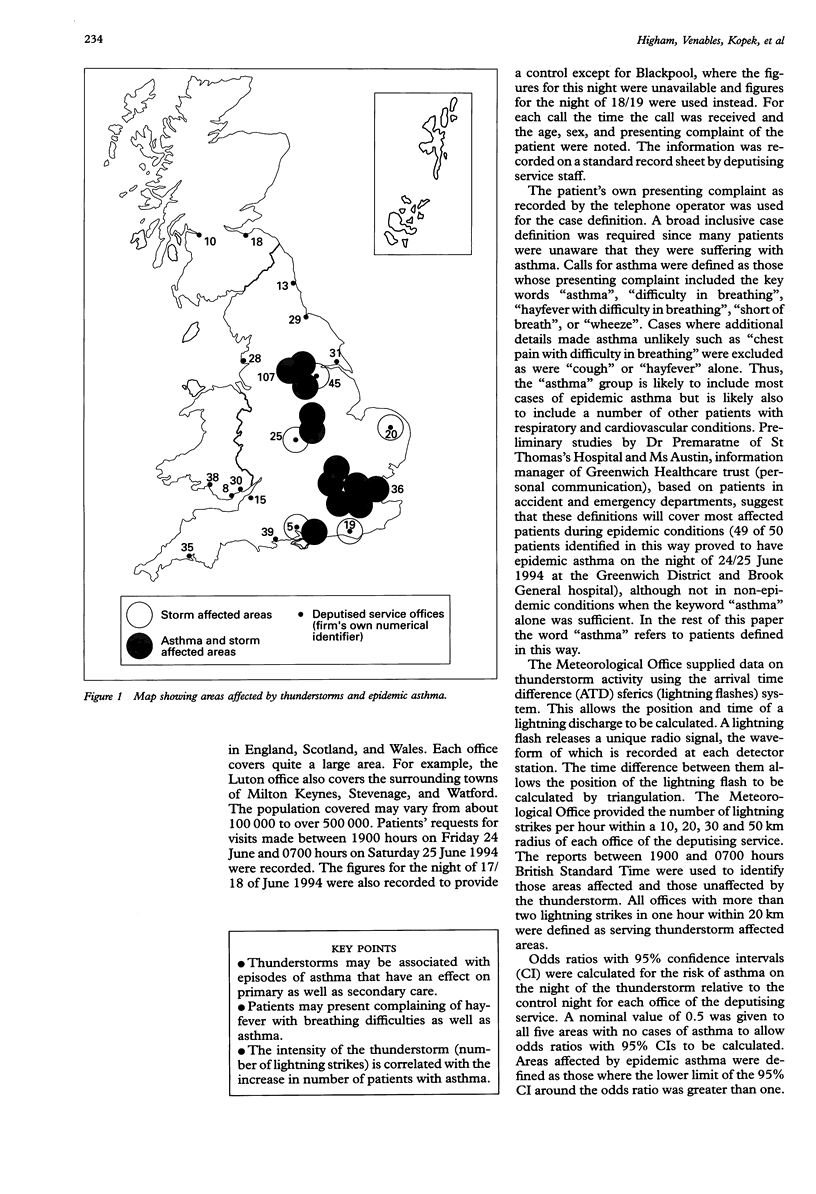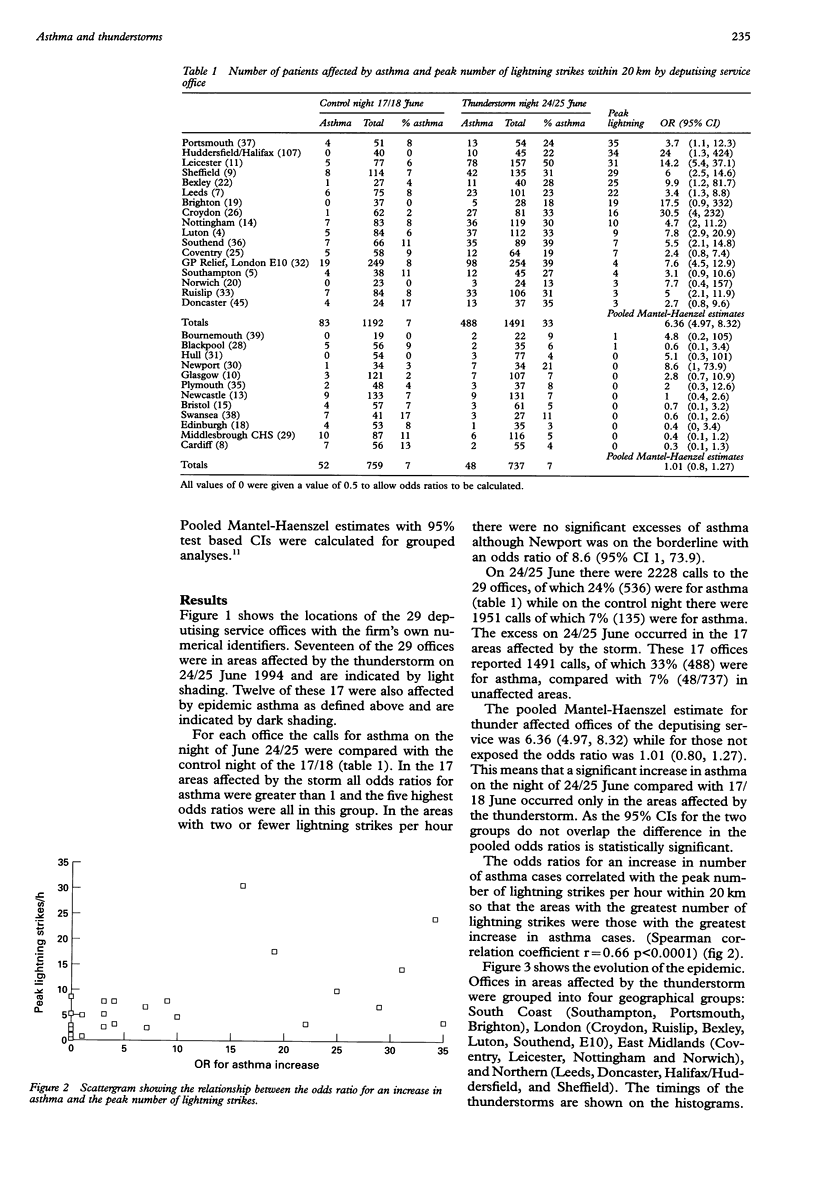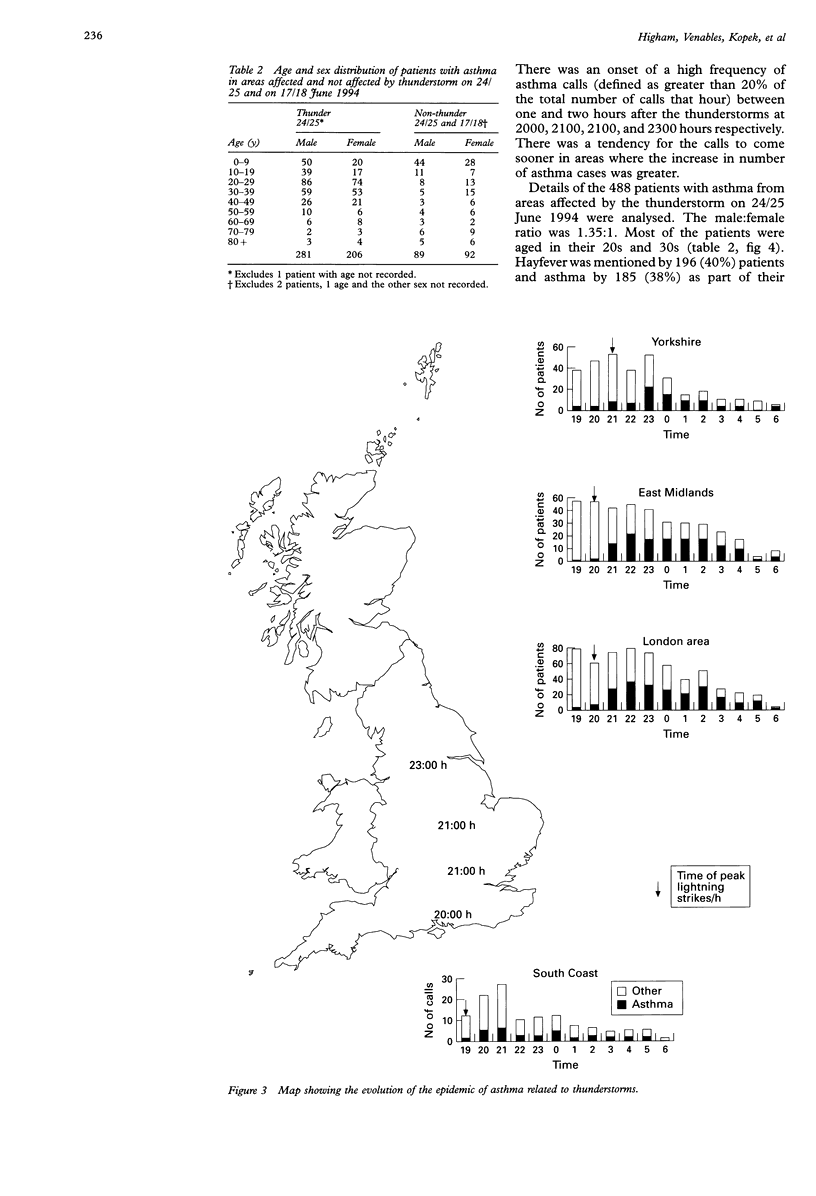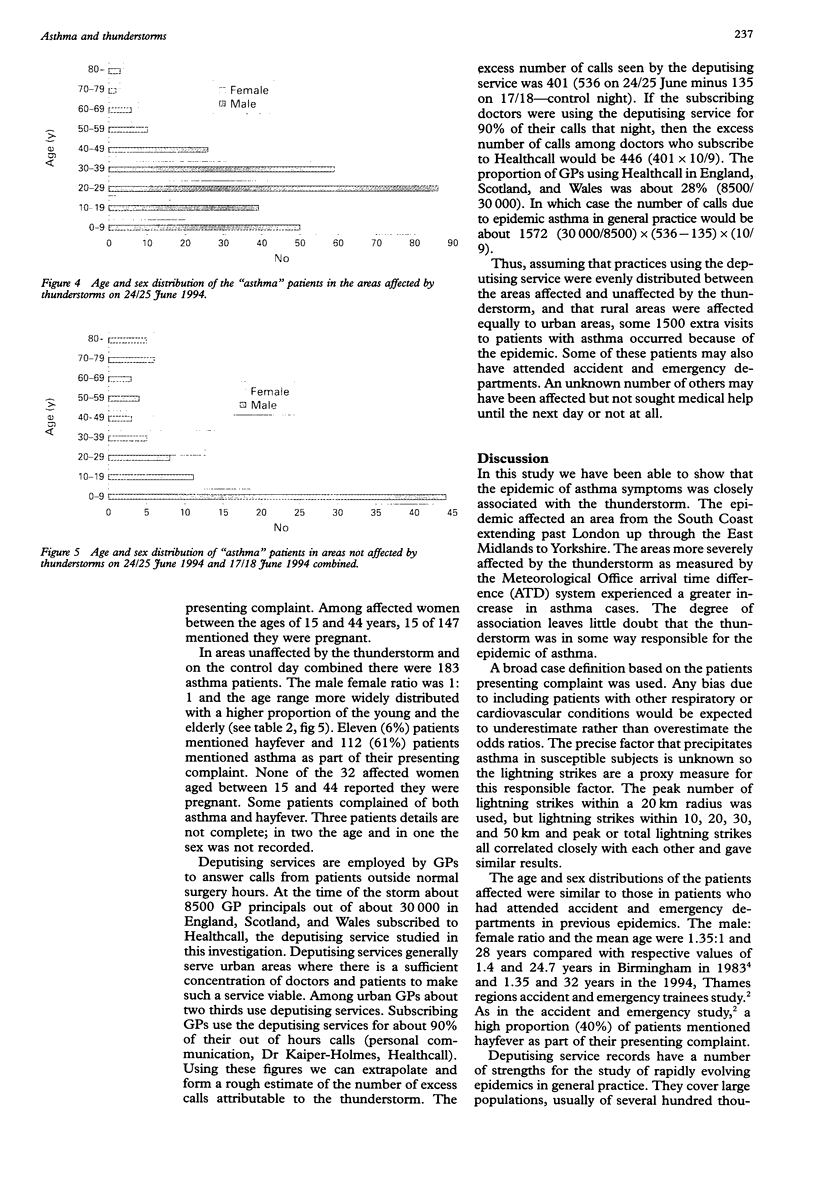Abstract
OBJECTIVE: To describe the areas affected and the scale of an epidemic of thunderstorm associated asthma on the night of 24/25 June 1994 and to explore the spatial and temporal relationship between the thunderstorm and the associated epidemic. SETTING: The 29 offices of a deputising service for general practitioners' (GP) out of hours calls (Healthcall). At the time of the storm the deputising service provided out of hours cover for about 8500 out of about 30000 GPs in England, Scotland, and Wales. METHODS: Patients who phoned the Healthcall offices to request a home visit were categorised as "asthma" or "other causes" based on their presenting complaint. The number of calls on the night of 24/25 June 1994 was compared in areas affected by thunderstorms and areas not affected by thunderstorms and with the night of 17/18 June 1994, when there were no thunderstorms. RESULTS: A large area of the south and east of England was affected by an epidemic of asthma closely related both temporally and spatially with the thunderstorms on 24/25 June 1994. The pooled Mantel-Haenszel estimate for the risk of asthma in thunderstorm affected areas compared with the control night was 6.36 (95% confidence interval 4.97, 8.32) compared with a value of 1.01 (0.80, 1.27) for those not exposed. Extrapolation suggests about 1500 extra patients were likely to have requested a visit from a GP that night because of epidemic asthma. CONCLUSIONS: Under certain circumstances thunderstorms are associated with asthma and can affect many patients. Deputising services are a useful source of data for the investigation of epidemics in primary care.
Full text
PDF





Images in this article
Selected References
These references are in PubMed. This may not be the complete list of references from this article.
- Alderman P. M., Sloan J. P., Basran G. S. Asthma and thunderstorms. Arch Emerg Med. 1986 Dec;3(4):260–262. doi: 10.1136/emj.3.4.260. [DOI] [PMC free article] [PubMed] [Google Scholar]
- Bellomo R., Gigliotti P., Treloar A., Holmes P., Suphioglu C., Singh M. B., Knox B. Two consecutive thunderstorm associated epidemics of asthma in the city of Melbourne. The possible role of rye grass pollen. Med J Aust. 1992 Jun 15;156(12):834–837. doi: 10.5694/j.1326-5377.1992.tb136994.x. [DOI] [PubMed] [Google Scholar]
- Celenza A., Fothergill J., Kupek E., Shaw R. J. Thunderstorm associated asthma: a detailed analysis of environmental factors. BMJ. 1996 Mar 9;312(7031):604–607. doi: 10.1136/bmj.312.7031.604. [DOI] [PMC free article] [PubMed] [Google Scholar]
- Davidson A. C., Emberlin J., Cook A. D., Venables K. M. A major outbreak of asthma associated with a thunderstorm: experience of accident and emergency departments and patients' characteristics. Thames Regions Accident and Emergency Trainees Association. BMJ. 1996 Mar 9;312(7031):601–604. doi: 10.1136/bmj.312.7031.601. [DOI] [PMC free article] [PubMed] [Google Scholar]
- Knox R. B. Grass pollen, thunderstorms and asthma. Clin Exp Allergy. 1993 May;23(5):354–359. doi: 10.1111/j.1365-2222.1993.tb00339.x. [DOI] [PubMed] [Google Scholar]
- Murray V., Venables K., Laing-Morton T., Partridge M., Thurston J., Williams D. Epidemic of asthma possibly related to thunderstorms. BMJ. 1994 Jul 9;309(6947):131–132. doi: 10.1136/bmj.309.6947.131c. [DOI] [PMC free article] [PubMed] [Google Scholar]
- Packe G. E., Ayres J. G. Aeroallergen skin sensitivity in patients with severe asthma during a thunderstorm. Lancet. 1986 Apr 12;1(8485):850–851. doi: 10.1016/s0140-6736(86)90954-2. [DOI] [PubMed] [Google Scholar]
- Packe G. E., Ayres J. G. Asthma outbreak during a thunderstorm. Lancet. 1985 Jul 27;2(8448):199–204. doi: 10.1016/s0140-6736(85)91510-7. [DOI] [PubMed] [Google Scholar]




